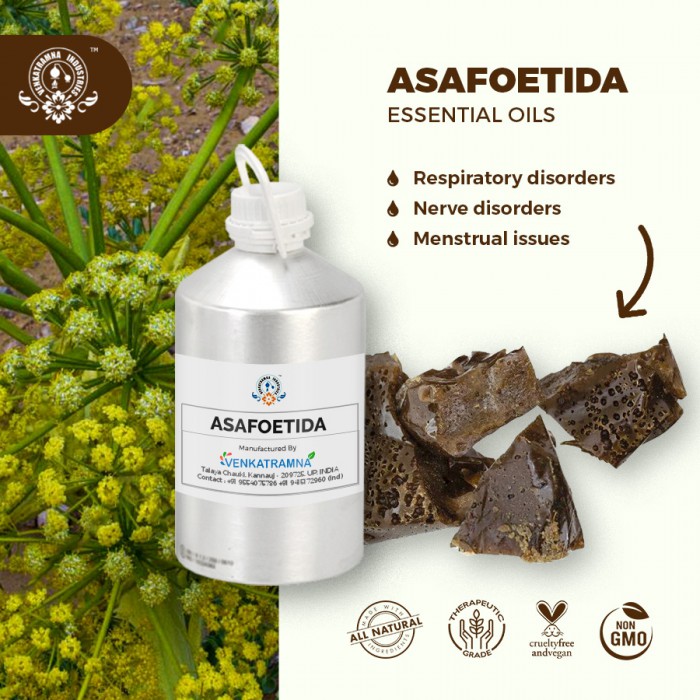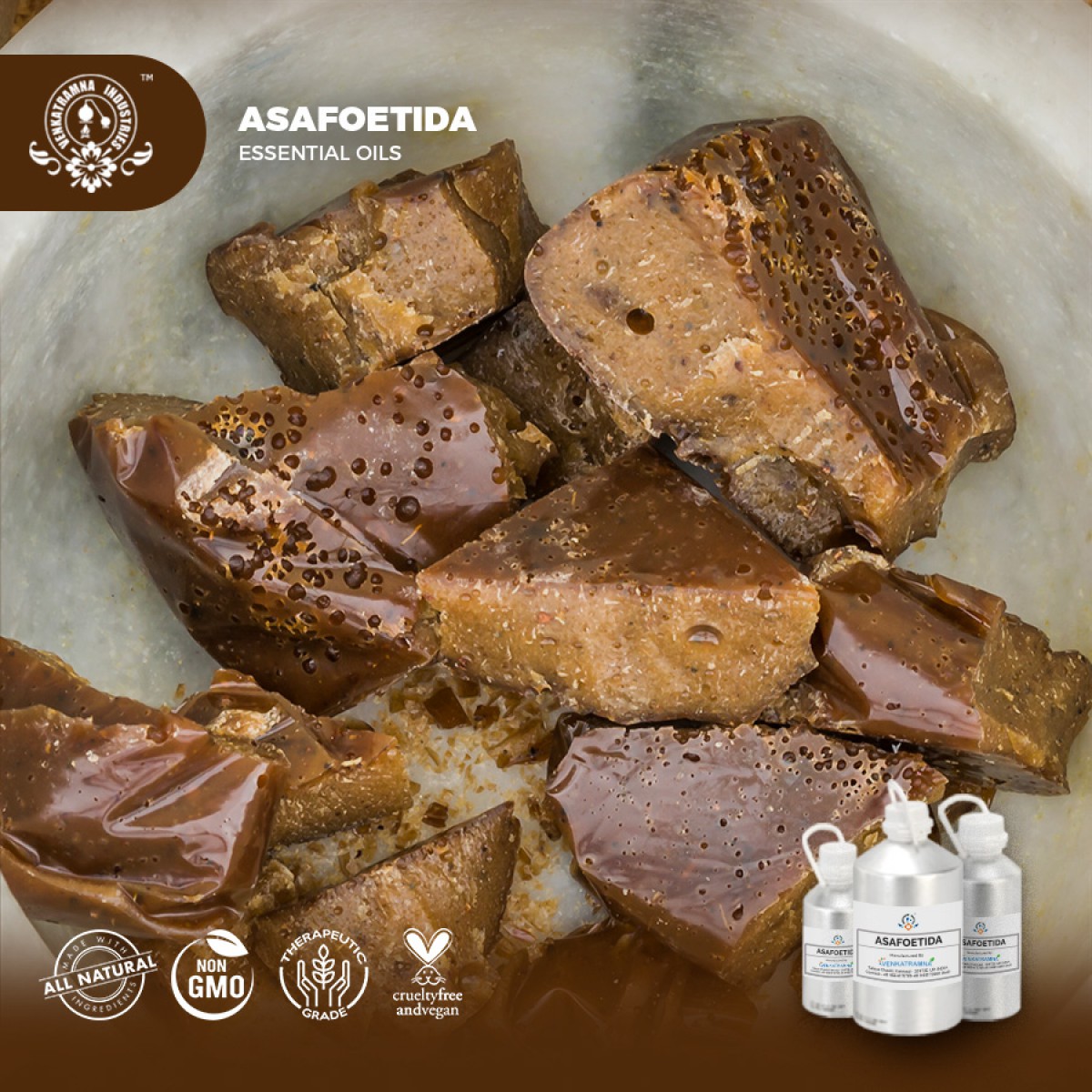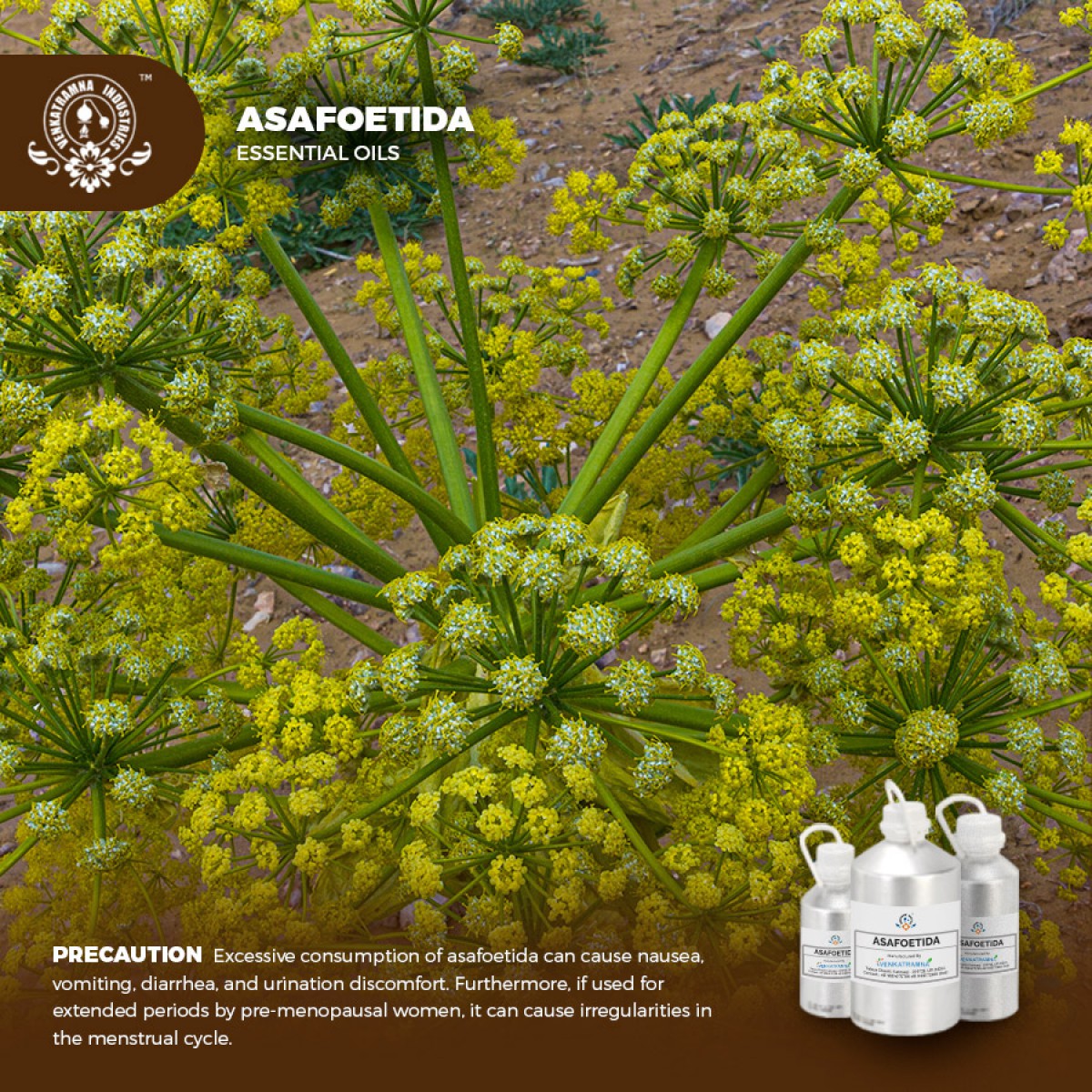Botanical Name: Ferula asa- foetida L. Common name: Devil's Dung, Hing Read More
Botanical Name: |
Ferula asa- foetida L. |
|
Common name: |
Devil's Dung, Hing |
|
Plant family: |
Apiaceae (Umbelliferae) |
|
Genus: |
Ferula |
|
Appearance/Color: |
Pale yellow to dark yellow liquid. |
|
Odor: |
Sulfureous, alliaceous, savory, green onion and resinous with a
vegetative note, metallic, woody, pungent. |
|
Blends With: |
Garlic, onion, Basil, Bay, Caraway, And Cardamom. Soluble in in Alcohol, insoluble in water. |
|
Origin |
India |
Plants have been a constant source of drugs and recently,
much emphasis has been placed on finding novel therapeutic agents from
medicinal plants. Today many people prefer to use medicinal plants rather than
chemical drugs. Ferula asafoetida Linn:
Asafoetida, the gum resin prized as a condiment in India and Iran, is obtained
chiefly from plant Ferula asafoetida. The Latin
name ferula means “carrier” or “vehicle”. Asa is a latinized form of Farsi asa
“resin”, and Latin foetidus means “smelling, fetid”. In ancient Rome,
asafoetida was stored in jars together with pine nuts, which were alone used to
flavor delicate dishes. Another method is dissolving asafoetida in hot oil and
adding the oil drop by drop to the food. If used with sufficient moderation,
asafoetida enhances mushroom and vegetable dishes, but can also be used to give
fried or barbecued meat a unique flavor. Ancient texts describe it as hing and
several centuries of its constant use have bestowed upon it the peculiarity of
a tempting spice and trusted medicine. Hing is bitter and pungent in taste and
light, sharp, unctuous and hot in effect. Ayurvedic texts have categorized hing
as deepniya and sanjna-sthapaka (an appetiser and a restorer of consciousness).
It is popular household remedies and its components are used for many
prescriptions in traditional healing.
Asafoetida is used as a flavoring agent and forms a constituent of many spice mixtures. It is used to flavor, curries, meatballs, dal and pickles. The whole plant is used as a fresh vegetable. The herb is also used as an antidote of opium. Given in the same quantity as opium ingested by the patient, it will counteract the effect of the drug.
The complete range of conditions or methods of use are beyond our control therefore we do not assume any responsibility and expressly disclaim any liability for any use of this product. Information contained herein is believed to be true and accurate however, all statements or suggestions are made without warranty, expressed or implied, regarding accuracy of the information, the hazards connected with the use of the material or the results to be obtained from the use thereof. Compliance with all applicable federal, state, and local laws and local regulations remains the responsibility of the user.
The FDA has not evaluated the statements on this website. No claims are made by Venkatramna Industries as to the medicinal value of any products from vriaroma.com or by us. The information presented here is for educating our customers about the traditional uses of essential oils and is not intended to diagnose, treat, cure, or prevent any disease. You are responsible for understanding the safe application of these products. If you have any questions, please call or email us for further information.
As per NAHA guidelines, New Directions Aromatics (NDA) does not recommend the ingestion of essential oils. It is imperative to consult a medical practitioner before using Essential Oils for therapeutic purposes. Pregnant and nursing women and those taking prescription drugs are especially advised not to use this product without the medical advice of a physician. The oil should always be stored in an area that is inaccessible to children, especially those under the age of 7.
Ferula asafoetida is herbaceous plant of the
umbelliferae family. It is oleo gum resin obtained from the rhizome and root of
plant. This spice is used as a digestive aid, in food as a condiment and in
pickles. It is used in modern herbalism in the treatment of hysteria, some
nervous conditions, bronchitis, asthma and whooping cough. It was at one time
employed in the treatment of infantile pneumonia and flatulent colic.
Asafoetida has been held in great esteem among indigenous
medicines, particularly in Unani system from the earliest times. It is widely
used in India in food and as a medicine in Indian systems of medicine like
ayurveda. It is oleo gum resin obtained from the rhizome and root of plant.
This spice is used as a digestive aid, in food as a condiment and in pickles.
It is used in modern herbalism in the treatment of hysteria, some nervous
conditions, bronchitis, asthma and whooping cough. It was at one time employed
in the treatment of infantile pneumonia and flatulent colic. The gum resin is
antispasmodic, carminative, expectorant, laxative, and sedative. The volatile
oil in the gum is eliminated through the lungs, making this an excellent
treatment for asthma. The odor of asafoetida is imparted to the breath,
secretions, flatus, and gastric eructations. Its properties are antispasmodic,
expectorant, stimulant, emmenagogue and vermifuge. Asafoetida has also been
used as a sedative. It also thins the blood and lowers blood pressure.
·
Blood pressure/Hypertension
·
Indigestion
·
Pain
·
Respiratory disorders
·
Nerve disorders
·
Menstrual issues
·
Cancer
·
Diabetes
·
Skin problems
·
Swine Flu/H1N1
|
S.No |
Key Constituents |
Strength (%) |
|
1 |
1-(Methylthio)propyl (E)-1-
propenyl disulfide |
2.7-37.9 |
|
2 |
2-Butyl (E)-1-propenyl
disulfide |
11.2-22.8 |
|
3 |
1-(Methylthio)propyl (Z)-1-
propenyl disulfide |
2.6-18.5 |
|
4 |
a-Pinene |
0-11.9 |
|
5 |
2-Butyl (Z)-1-propenyl
disulfide |
0-11.1 |
|
6 |
Isobutanol |
0-7.7 |
|
7 |
b-Pinene |
0.2-7.1 |
|
8 |
(Z)-b-Ocimene |
0-6.1 |
|
9 |
(E)-b-Ocimene |
0-3.6 |
|
10 |
Methyl
(E)-1-propenyl trisulfide |
0-2.6 |
|
11 |
Dibutyl trisulfide |
0.2-1.8 |
|
12 |
Methyl
(E)-1-propenyl disulfide |
0-1.7 |
|
13 |
Methyl (Z)-1-propenyl
trisulfide |
0-1.3 |
|
14 |
a-Fenchyl
acetate |
0-1.2 |
|
15 |
Dimethyl trisulfide |
0-1.1 |
Refractive Index:
1.5100-1.5350-25 C0
Optical Rotation: 150
To + 400 25 C0
Salmonella: Negative
·
Hazardous: possible skin sensitizer.
Cautions its richness in sulfur compounds may imbue Asafoetida
oil with a degree of sensitization or irritancy.
·
Adverse skin reactions No information found for Asafoetida
oil, but sulfur compound tends to cause skin reactions.
·
Acute toxicity: No information found for Asafoetida
oil. some sulfur compounds are moderately toxic.
·
Carcinogenic/anticarcinogenic potential No
information found but Asafoetida oil contains no known carcinogens.
·
Toxicity No data available
·
Persistence and degradability No data available
·
Bioaccumulative potential No data available
·
Mobility in soil No data available
·
Results of PBT and vPvB assessment Product:
Assessment : This
substance/mixture contains no components considered to be either persistent,
bioaccumulative and toxic (PBT), or very persistent and very bioaccumulative
(vPvB) at levels of 0.1% or higher.





 MSDS-Asafoetida.pdf
MSDS-Asafoetida.pdf




